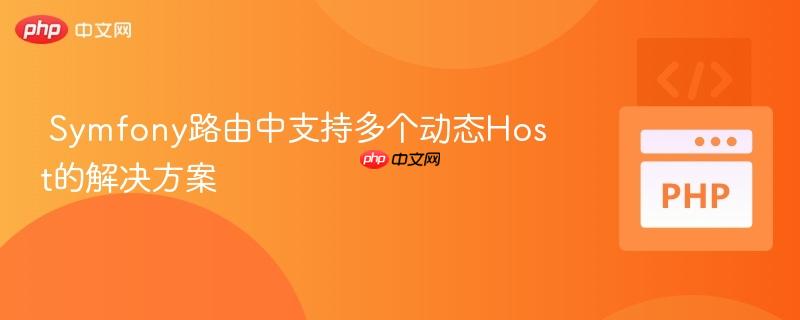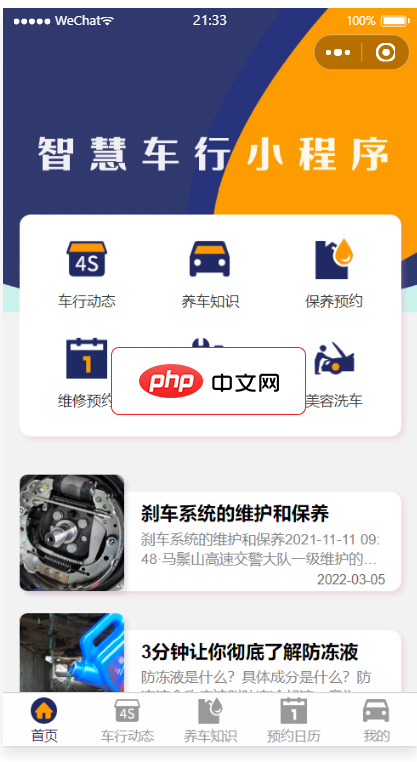
本文档旨在提供一种在symfony框架中支持多个动态host的解决方案,特别是在需要根据不同的域名或子域名将请求路由到不同的应用上下文时。通过自定义requestlistener,我们可以在路由过程中动态设置域名参数,从而实现灵活的路由配置,同时讨论了该方案的优缺点以及潜在的改进方向。
在Symfony应用中,根据不同的域名或子域名将请求路由到不同的应用上下文是一个常见的需求。例如,`main-domain.tld` 和 `main-domain2.tld` 可能对应于 `main_context`,而 `service.main-domain.tld` 和 `admin.main-domain.tld` 则分别对应于 `service_context` 和 `admin_context`。本文将探讨一种解决该问题的方法,并分析其优缺点。 ### 问题描述 最初,应用只有两个主要的应用上下文,并且每个上下文都有一个固定的域名。可以使用以下方式将控制器分配给特定的上下文: ```php use Symfony\Component\Routing\Annotation\Route; #[Route( path: '/', requirements: ['domain' => '%app.public_hostname_context1%'], defaults: ['domain' => '%app.public_hostname_context1%'], host: '{domain}', )]其中 app.public_hostname_context1 是在 .env.local 文件中配置的域名。
然而,当需要为一个上下文支持多个域名时,问题就出现了。无法在 defaults 配置中访问当前的域名,因此需要在每次生成URL时显式地设置域名。
一种解决方案是创建一个 RequestListener,在路由之前动态设置域名参数。
首先,从路由定义中删除 defaults,并为每个上下文的有效域名提供一个模式:
use Symfony\Component\Routing\Annotation\Route;
#[Route(
path: '/',
requirements: ['domain' => '%app.public_hostnames_context1_pattern%'],
host: '{domain}',
)]app.public_hostnames_context1_pattern 是在 .env.local 文件中配置的模式,包含该上下文的所有可能域名,例如:
PUBLIC_HOSTNAME_CONTEXT1_PATTERN=(?:service\.main-domain\.tld|service\.main-domain2\.tld)
接下来,创建一个 RequestListener,在 RouterListener 之前执行,以设置默认的域名参数。

智慧车行小程序,是一个专门为洗车/4S/车辆维修行业打造的小程序,前后端完整代码包括车行动态,养车常识,保养预约,维修预约,洗车美容预约,汽车检测预约等功能。采用腾讯提供的小程序云开发解决方案,无须服务器和域名预约管理:开始/截止时间/人数均可灵活设置,可以自定义客户预约填写的数据项预约凭证:支持线下到场后校验签到/核销/二维码自助签到等多种方式详尽的预约数据:支持预约名单数据导出Excel,打印
 1
1

在 services.yaml 中配置 RequestListener:
services:
# 必须在 RouterListener (优先级 32) 之前调用,以加载域名
App\EventListener\RequestListener:
tags:
- { name: kernel.event_listener, event: kernel.request, priority: 33 }创建 RequestListener 类:
<?php
declare(strict_types=1);
namespace App\EventListener;
use Symfony\Component\HttpKernel\Event\RequestEvent;
use Symfony\Component\Routing\RouterInterface;
class RequestListener
{
public function __construct(
private RouterInterface $router,
){}
public function onKernelRequest(RequestEvent $event)
{
if (false === $this->router->getContext()->hasParameter('domain')) {
$this->router->getContext()->setParameter('domain', $event->getRequest()->getHost());
}
}
}该 RequestListener 检查路由上下文中是否已存在 domain 参数。如果不存在,则将当前请求的 Hostname 设置为 domain 参数。
这种解决方案提供了一种在 Symfony 路由中支持多个动态 Host 的方法。然而,需要权衡其优缺点,并根据实际情况进行调整。特别是需要注意以下几点:
总而言之,该方案提供了一个可行的起点,但需要根据具体需求进行定制和优化。通过仔细考虑路由策略和潜在的陷阱,可以构建一个健壮且可维护的 Symfony 应用。

Copyright 2014-2025 https://www.php.cn/ All Rights Reserved | php.cn | 湘ICP备2023035733号